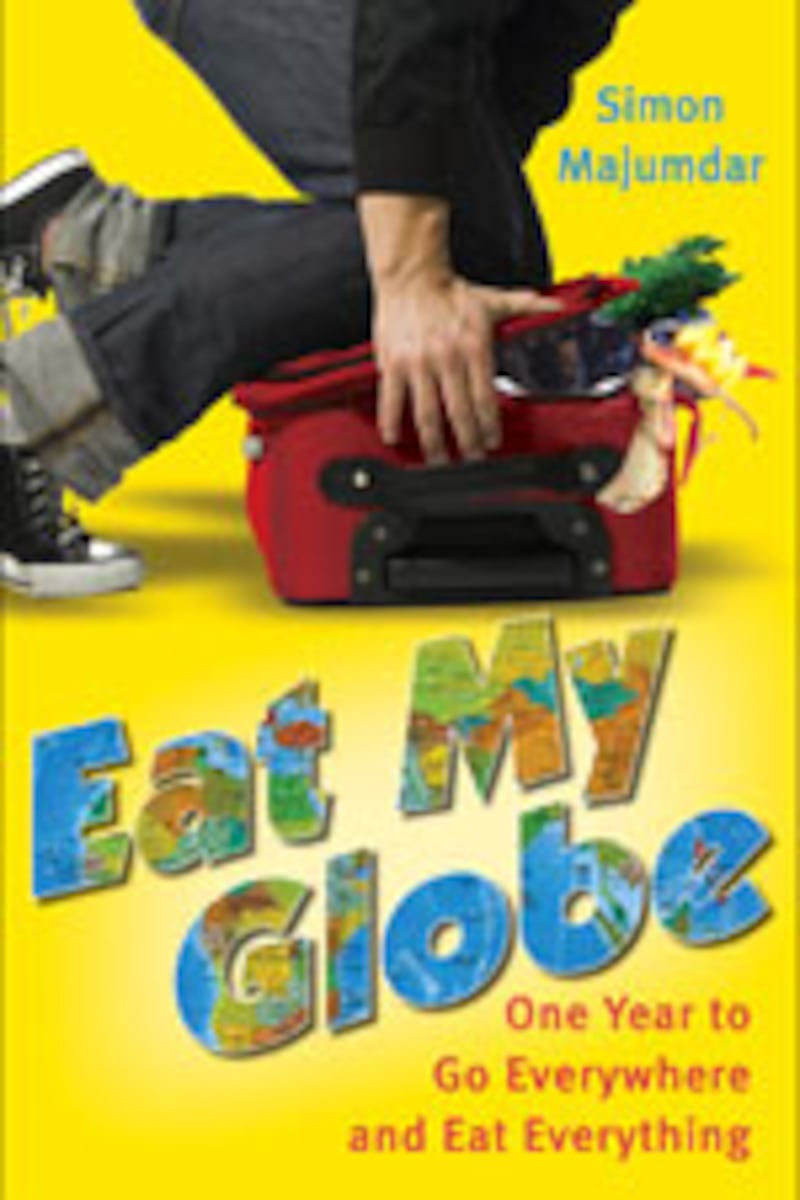My journey was born out of a crisis. The death of my mother combined with the onset of middle age led to the realization that, with more sand in the bottom of the egg timer than the top, a 9-to-5 job was not what I wanted to do with the rest of my life no matter how lucrative it may have been. Matters had reached a crisis point and, on one fateful afternoon, I realized I had spent most of the day punching off emails to friends that simply read “I HATE MY JOB.” That same evening, I found an old notebook in which I had written things to achieve once I had turned 40. At the bottom were four simple words “Go Everywhere, Eat Everything.” And so began a yearlong odyssey that culminated in the recent book, Eat My Globe.
The smell of harkl alone would peel the flesh from your face at 100 paces and the taste is like sipping Hell through a straw.
I had no more lofty ambition when I set out on the road than to experience foods in their place of origin, rather than their ersatz representations in London, and hopefully in the company of engaging people. However, it was not long into my trip before I began to realize that this was not just going to be an arduous physical journey but one that would challenge many of my assumptions about the world in which I lived, the people who inhabit it and the food they ate, realizing that often the most challenging foods are born out of the necessities of climate, availability, and poverty as they are from any desire to eat the unusual. However, I also learned along the way that the generosity with which these dishes were invariably served often made the unpalatable delicious, as if it had been steeped in the spirit of friendship.
On the first leg of the journey, which took me from Australia, through Japan, Hong Kong, and China, I found myself in Mongolia, a country only slowly recovering its proud heritage after decades of serfdom to Soviet overlords. My notions of the country and its people were almost entirely formed by schoolboy stories of Genghis Khan and his invading hordes, of wanton pillage and uncivilized destruction and, while the capital, Ulan Batar is arguably the ugliest on earth, I soon began to realize that there was much more to the people than I had first assumed. Where I imagined a nation of unfriendly, or at least people wary of outsiders, I found instead that the Mongolians I interacted with were engaging, educated, wickedly humorous, and desperate to show off their country in a good light.
A few hours from the capital, in the Mongolian wilderness with its sweeping plains and clear blue skies studded with circling eagles, I was ushered into a yurt, the tented accommodation of the majority of Mongolia’s nomadic population, to sample Airag, a noxious drink made from horse’s milk that is fermented in a large bag made from cow stomach until it reaches 5 proof. It is potent stuff and the locals can drink well over a gallon a day, contributing to the country’s high levels of liver cirrhosis. I may have shied away from a second helping of the challenging brew, but as I sipped, sat with my new friends, I saw this mysterious country in a new light.
Likewise, on a later leg of the journey, I arrived in Manila, capital of the Philippines. It is very much the poor relation when it comes to traveling hotspots of Southeast Asia, with Vietnam and Thailand drawing the majority of visitors. At first, the reasons why were all too apparent, with the poverty of the country with its attendant problems of prostitution combining with pollution and traffic in a seeming-constant gridlock, making Manila one of the most blighted cities on earth. Yet, during my all-too-short time there, the charms of the country and its people began to seep under my defenses.

It helped, of course, that the food confounded all expectations. There are few countries where the inhabitants are as obsessed with food as the Philippines and, while I certainly found the surfeit of pork and deep frying I had anticipated, I also found cuisine of bewildering variety. One meal prepared for me by artist, writer, and gourmand Claude Tayag in the city of Angeles ranks with any I have ever eaten. Salads of crisp ferns with pickled quail egg dressings, seafood stews with shrimp whose heads were ripped off, juices dripping into the bowl to thicken the sauce and even sisig, an almost ubiquitous dish made from the head meat of the pig, sizzled with chilies and Kalamansi limes, and always served with a cold beer.
Add to that a people for whom hospitality has been ingrained over generations and whose friendliness was warm, sincere, and sometimes overwhelming. It is little wonder that, when pressed, I have on more than one occasion cited this underrated country as my first choice for a return visit.
One could have safely assumed that there would be little about near neighbors that could challenge or surprise. Iceland—until the recent financial meltdown, one of the most prosperous countries in Northern Europe—initially appears to be a well-to-do population living a comfortable existence in a country where the quality of life is among the highest anywhere. Yet, due in no small part to its savage climate, which promoted the use of unusual ingredients and methods of preservation, Iceland’s food is arguably the most challenging on earth.
At a café in the central bus station in the capital, Reykjavik, I found myself facing one of the most gruesome sights of the trip, as I lost a staring competition to half a sheep’s head on a plate, the skin singed with a blowtorch to remove the wool and the eyes left intact as a meaty treat for the diner. Yet, this was positively benign compared to my encounter with one of the world’s most famously appalling foods: harkl, the meat of a basking shark, left to rot in sand and gravel until the ammonia produced counteracts the acid under the skin that the shark uses for flotation.
The smell alone would peel the flesh from your face at 100 paces and the taste is like sipping Hell through a straw. Easily one of the worst tastes of the whole of Eat My Globe and yet one experienced in a prosperous country and after one of the shortest journeys from my home.
Visiting many of the countries on my trip made me challenge my Western sensibilities as I realized that for much of the world, food does not come in choice cuts from a pristine supermarket but is often a source for fuel and nourishment taken from whatever sources are available. And yet, despite the fact that I was often faced with eating animals or parts of the animal I would never conscience at home, they were served with such overwhelming generosity that I forgot to be squeamish and dived into the experiences with considerable gusto.
Inevitably some things were just simply too extreme for me to explain away by referencing necessity and almost as inevitably all roads in such matters lead to China. The sight of lizards and scorpions tossing in their death throes as they were thrown alive onto hot grills in Beijing’s “Snack Street” may not have been to my taste, but I could rationalize it as an oddity. In Yangshuo, in Southern China, however, I encountered one taste too far as I walked through the local market and saw butcher’s blocks laden with the carcasses of dogs ready to be purchased by local housewives.
In small cages, dingo-like dogs cowered waiting for their fate, and on the blocks those who had met theirs sat like models waiting to be portioned. In the spirit of being a culinary Magellan, I sampled one meal of braised dog at a local restaurant, but soon vowed never to again when I was informed that the animals were placed in sacks before being killed and beaten so they released adrenalin into the meat, which apparently not only made them taste better but also, the locals believed, bestowed virility on the diner.
It was one step too far. Not the eating of an animal we in the West would consider a pet rather than a source of protein—I had already overcome that hurdle—but in the wanton cruelty dished out without qualms by the butchers for the spurious pleasure of others.
In the end, my journey taught me many lessons, not least that the values of my Western upbringing have little use when traveling in the developed world, but here, in China, it also taught me that some things are objectively wrong and cannot be justified by reference to local custom. A useful lesson to us all.
Plus: Check out Hungry Beast, for more news on the latest restaurants, hot chefs, and tasty recipes.
Simon Majumdar is the author of Eat My Globe and the co-author of www.doshermanos.co.uk one of the most widely read food Web sites in the United Kingdom.



